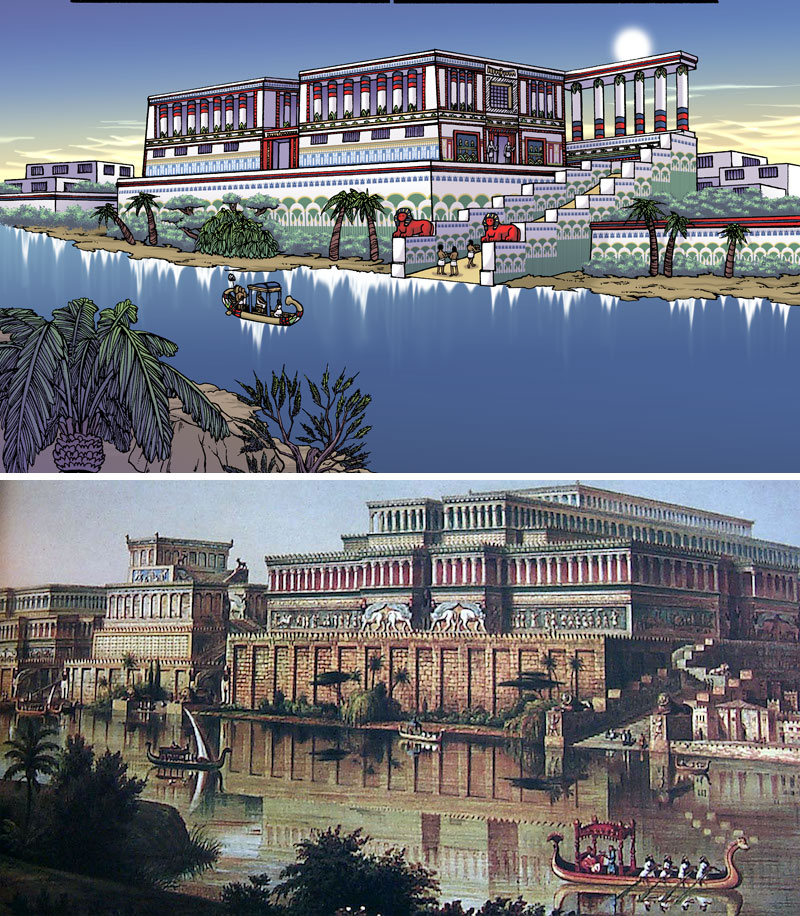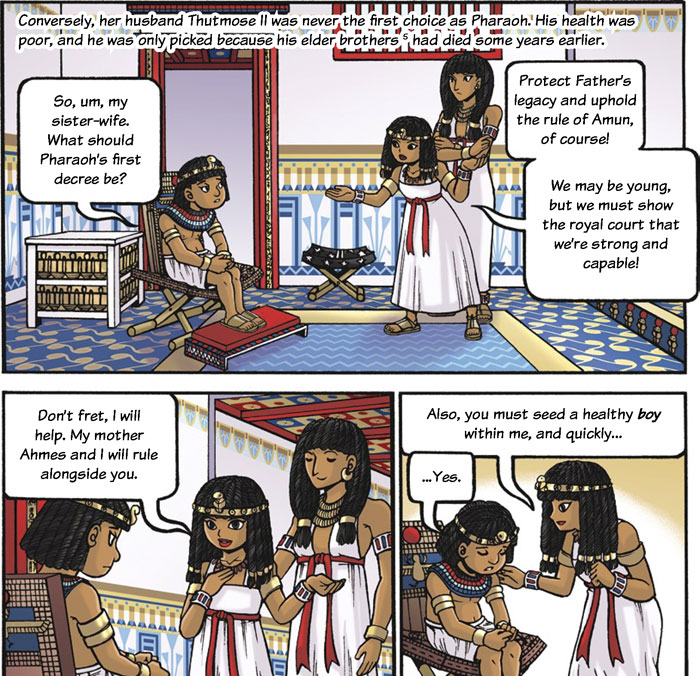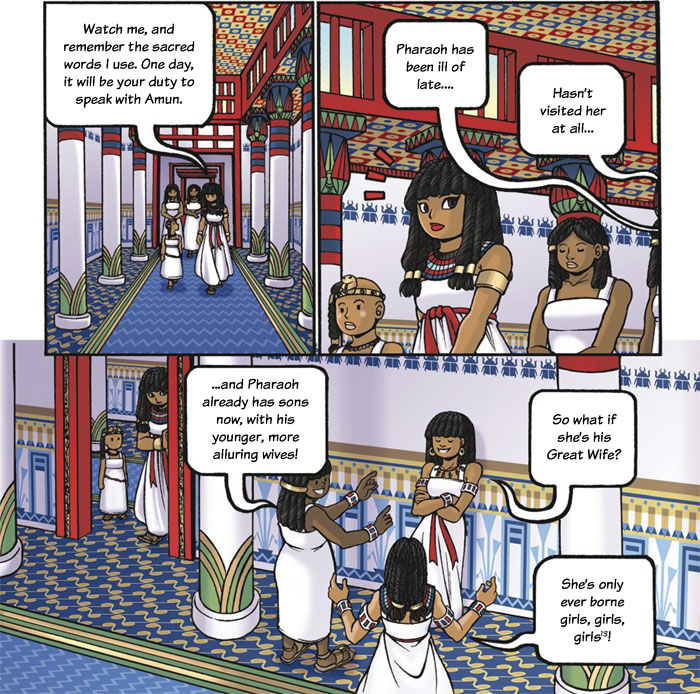
This is from my “Women Who Were Kings #1: Hatshepsut” story, which is 30 pages. I spent a fair amount of time doing research on Egypt, the New Kingdom (18th Dynasty, which is approx 1550BC – 1292BC) and Hatshepsut herself, so I’ll list my sources below and what I had to consider when I put this picture together.
It’s difficult to reconstruct the Egyptian royal palace from the time of Hatshepsut, because none of it remains.
- Egyptian palaces were built using unbaked Nile bricks, with only things like columns, toilets and doorway bases made of stone, so much of it is destroyed.
- The above is an artist’s impression of Malkata palace, but whose image credit remain unknown since the websites I cribbed the picture off does not accurately credit the picture’s artist or origins. The Malkata palace is the only known 18th Century Egyptian palace that has any ruins remaining – however, it was built by Amenhotep III, which means that it comes several generations after Hatshepsut, and thus is not necessarily representative of Hatshepsut’s palace.
- On the other hand, this artist’s depiction is not an inaccurate depiction of an Egyptian palace. Egyptian palaces were often built along the Nile, with ramps (Egyptians didn’t really do stairs) that allow the pharaoh’s boat (and entourage) to dock.
- Pharaohs in Hatshepsut’s time had traveling courts and multiple palaces along the Nile in which the pharaoh can dock and perform rites and hold court, though Hatshepsut herself probably didn’t travel as much as Thutmose III did, since he was younger and fitter.
![]()

Likewise, we don’t know much about the exact inner decorations of an Egyptian palace.
- However, it’s probable that Egyptian palaces were painted white, with walls filled with colourful drawings of Egyptian flora and fauna. You don’t see this as much in my depiction, because the pictures became mind-boggling busy when I added flora and fauna to the walls of the palace, and so I removed them because otherwise it becomes too visually dense.
- One thing we do know is that Egyptian windows were typically high, and close to the ceiling. This is because Egypt is a sandy place, and had the windows been closer to the floor, the palace would very quickly fill up with sand and dirt blowing in by the wind.
- Likewise, we also know that the palace probably had blue floor tiles, with some of it depicting the Nile river and the fishes and marine life that lived in it. Again, I removed the marine life because it would otherwise make the images too busy.

There are various tools, implements, jewellery and minor details scattered through the illustrations that I borrowed from either wall reliefs in tombs, or from funerary items found. A good number of them can be found in the Metropolitan Museum of Art, which hosts a large collection of Hatshepsut items.
![]()
Visual Sources
- Cooney, Kara. “The Woman Who Would be King: Hapshetsut’s Rise to Power in Ancient Egypt”. USA: Crown Publishers, 2014.
- Roehrig, Catherine H. et al. “Hatshepsut: From Queen to Pharaoh”. USA: The Metropolitan Museum of Art, 2006.
- Hill, J. “Malkata (Malqata) Palace”. Ancient Egypt Online, 2010. Web. 31 Nov 2017. Retrieved from http://www.ancientegyptonline.co.uk/malkatapalace.html
- “The Ancient Palace of Malkata, Egypt” (2015). Lateet: A Small Dose of Interesting. Web. 31 Nov. 2017. Retrieved from http://www.lateet.com/the-ancient-palace-of-malkata-egypt/
